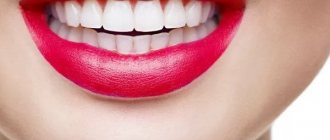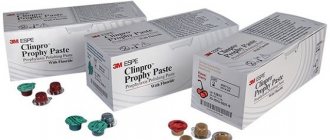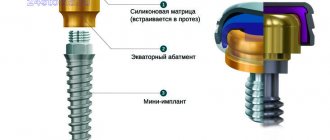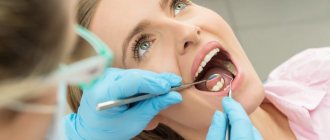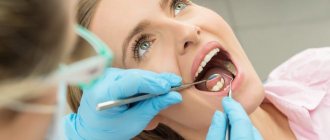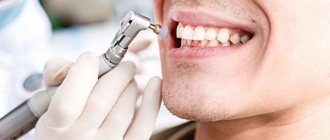Parents try to teach their children oral hygiene from early childhood. However, many of them have questions about how often to carry out procedures and how long to brush their teeth. Dentists recommend performing manipulations 2 times a day (morning and evening). However, this frequency of hygiene procedures can be considered average. After all, some patients need to brush after every meal to prevent caries and other dental disorders. Let's consider the features of oral hygiene for patients of different categories.
The right time
People who carefully monitor their health try to remove bacterial plaque after each meal. Such manipulations reduce the risk of enamel destruction: carious bacteria are able to multiply and activate only in a suitable environment. On clean teeth, it will be more difficult for pathogenic flora to develop and produce acids that destroy the top layer of teeth.
During hygiene procedures, it is necessary to take into account some rules regarding the timing of cleaning. For example, morning oral care is best done after breakfast, and not vice versa. The need for morning cleansing after meals is due to several factors:
- distortion of the taste properties of food after using toothpastes;
- the possibility of staining the enamel after taking coloring drinks and foods (especially after using bleaching compounds).
Attention! Avoid brushing your teeth immediately after eating acidic foods. Acid tends to soften plaque and tooth tissue, so hygiene measures can lead to thinning of the enamel and increased sensitivity to cold and hot foods.
After breakfast, you should wait 30 minutes before brushing your teeth. This rule must be followed by both children and adults. It minimizes the appearance of microcracks in the enamel.
How long
At different times, scientific sources and dentists spoke about different times for oral hygiene. In books from the 50s you can find information where it is recommended to perform at least 150-200 brush strokes. It was believed that only with such a thorough procedure would it be possible to achieve a good effect in removing food debris and plaque.
Modern dentists believe that 10-15 movements in each direction are enough to achieve a positive effect when caring for the oral cavity. Basically, the time for brushing teeth depends on the structure of the elements, the age of the patient and the presence of orthodontic structures.
Cleaning takes the longest for people with bite pathologies (crossbite, twisted elements) and patients wearing braces
Under the corrective structures, food residues are actively clogged, which cannot be eliminated using a standard hygiene kit. For this reason, people undergoing orthodontic treatment should use additional care products (brushes, irrigators, dental floss and rinses).
The minimum duration of hygiene procedures is at least 3 minutes. This is due to the fact that the fluoride components of the pastes are not immediately absorbed into the enamel, but rather some time after the start of manipulation. It is also not recommended to immediately spit out the foam formed as a result of cleaning. For the best effect from using fluoride-containing products, you need to keep the paste in your mouth. The maximum time for oral care is 4 minutes. More thorough cleansing is harmful because it can lead to abrasion of the enamel layer and increase its sensitivity to external irritants. The optimal duration of manipulation is from 3 to 4 minutes.
What are dental floss and brush used for?
Floss and brush solve a number of problems:
- help remove pieces of food from hard-to-reach places;
- remove soft plaque, preventing the formation of caries, tartar, gingivitis and bad breath.
It would seem that these two items perform the same function, but no.
Each tooth in the mouth does its job. The incisors bite off the food, the fangs tear it into small pieces, the chewing teeth grind it into porridge, so that the food bolus then goes further into the stomach.
Due to the fact that the functions of teeth are different, their shape is also different and the interdental spaces are also different.
The front teeth - incisors and canines - have even spaces. Thread is ideal for cleaning them. We'll talk about the correct cleaning technique below.
The chewing teeth (those located further) have uneven spaces; they may have indentations that are not visible to us. In this case, dental floss will be ineffective because it will only be able to clean the joints of the teeth, but will not reach the grooves.
A thread can't do it, but a brush can. This is because its flexible bristles compress in narrow areas between the teeth, and expand in wide areas. This way no surface will be missed.
Therefore, dental floss is ideal for cleaning the front teeth, and brushes are ideal for cleaning the back teeth.
How often
How often should you brush your teeth? Dentists recommend that patients use a standard hygiene kit less than 2 times a day. This is especially true when brushing your teeth in the evening. Bacterial plaque accumulated during the day quickly provokes tooth destruction and damage to their tissues by caries. However, one standard set will not be enough. Dentists recommend using dental floss throughout the day (optimally after each meal). If you don’t have a brush, paste or floss at hand, then after eating you need to rinse your mouth with water.
For regular use, dentists do not recommend using pastes with a high content of abrasive components. It is advisable to alternate the drug with a regular gel. The course of using an abrasive should not exceed 1 month, otherwise the enamel of the elements will become thinner and make the teeth brittle.
Stages of the procedure
Professional sanitation of the oral cavity is carried out in stages.
Stage 1: Comprehensive inspection
It is performed using modern instruments to identify deposits and assess the condition of tissues.
Stage 2: removal of soft and hard formations
To obtain high results, two methods are combined: ultrasonic cleaning and Air Flow. The first option destroys the structure of tartar, the second removes plaque and remaining stone.
Stage 3: Polishing
The enamel is polished using special brushes and paste. The surface is smooth and shiny.
Stage 4: fluoridation
To protect bone tissue, a gel or varnish containing a high concentration of fluoride is used.
How do children brush their teeth?
Ultrasonic cleaning and Air Flow are not prescribed for children under 14 years of age. Professional sanitation of the oral cavity is performed using special brushes and paste. After dental treatment, the surface is coated with fluoride-containing gel to strengthen the enamel.
Time depending on method
There are several professional mouth cleaning techniques that anyone can practice at home. The chosen technique also determines how long hygiene will take. Let's consider popular ways to care for the elements of the oral cavity:
How to floss
- Charter method. Involves shaking movements with a brush located at an angle of 45-50 degrees to the gums. The method allows you to effectively clean food debris in hard-to-reach areas and perform a natural massage of the gums.
- Bass method. The technology is similar to the Charter method, but differs in more frequent vibrating movements. It imitates the movements of an electric toothbrush, which removes plaque and unhardened tartar more effectively than standard devices.
- Leonard's method. Involves brush movements perpendicular to the surface being treated.
- Reite's method. It is based on rolling movements of the pile in the direction from the gums to the cutting part of the teeth.
- Smith-bell system. When caring for the oral cavity, a person additionally performs movements that simulate chewing food. Use the brush in a circular motion with slight pressure of the bristles on the enamel.
The time for cleaning teeth using different methods may vary. It must be remembered that each surface of the crown must be processed at least 8 times. The total time of the hygiene procedure, regardless of the chosen method, cannot be less than 2.5 minutes for adults.
If a person cannot independently determine the time for optimal oral care, then he needs to see a dentist. The doctor will select the optimal method of care depending on the structural features of the row elements and the presence of malocclusion in the patient.
Is more often better?
Many patients believe that the frequency of oral care depends on the number of snacks they eat per day. Dentists consider this reasoning to be incorrect. When used frequently, the components of many toothpastes cause irritation and drying of the mucous membranes of the mouth. The only exceptions are those cases when a person has eaten sweets and high-carbohydrate foods.
In the daytime, to prevent caries, using floss or a brush without pastes will be enough.
Dentists do not discourage the use of chewing gum after snacks. The product stimulates increased production of saliva, which cleans food debris and pathogenic microorganisms from the surface of elements
People with braces, artificial teeth, and a history of digestive system diseases should not indulge in chewing gum.
Types of dental brushes
You need to choose brushes based on the shape and length of the bristles. There are two types of brush shapes: cylinder and cone.
- Cylinder
It has the same length of bristles, copes well with food stuck between teeth, prevents periodontitis, and is suitable for implants.
- Cone
The bristles become shorter towards the tip of the brush. Suitable for cleaning braces and dentures, as it allows you to clean areas under the clasps and in the spaces between the crowns.
What length of bristles is needed depends on the size of the spaces between the teeth. If they are narrow, brushes with short bristles (about 1 mm) are suitable. If, on the contrary, you are large or have braces, choose a brush with bristles no shorter than 3 mm.
Dentist advice
When can you brush your teeth? All dentists recommend resorting to hygienic procedures after meals (both morning and evening). This is because after consuming foods again, bacteria will continue to multiply in the mouth due to food debris on the teeth. Doctors recommend treating your teeth especially carefully at night. Evening cleansing should not be limited to using paste and brush. In addition, it is recommended to use floss or irrigator, rinse aid.
Dentists give valuable recommendations not only on the timing of hygiene procedures, but also on the technique of their implementation:
- before starting cleaning, rinse the bristles of the brushes with running water;
- squeeze out no more than 1 cm of paste onto the bristles, since abundant foam will interfere with the effective removal of bacterial plaque;
- the procedure begins with the upper jaw and gradually moves to the elements of the lower row;
- The pile of the product is held at an angle of 45 degrees to the surface being treated;
- The chewing surfaces of the molars are treated with circular and translational rotations.
Particular attention is paid to cleaning the outer surface of the tongue. A large number of bacteria are concentrated on its surface, which subsequently spread to the mucous membranes of the mouth and tooth enamel. The speaking organ is treated with the outside of a brush or a special scraper.
After the manipulations, it is recommended to massage the gums with light stroking movements. The procedure is optimal for the prevention of periodontal diseases.
After each meal, you can use special rinses or self-prepared herbal decoctions. Instead of special means, ordinary boiled water is also used to wash off food residues. In addition, you need to use floss.
Cleansing in children
It is necessary to care for baby teeth just as carefully as for permanent teeth. Otherwise, teeth destroyed by the pathological process will cause the formation of a malocclusion.
How long should children brush their teeth? On average, the procedure takes 2 minutes. If it is difficult for a child to independently navigate the duration, then he can buy a brush with a timer or install a stopwatch on his mobile phone. These manipulations will make the oral care procedure more fun.
How to tell if your teeth are brushed well
You can check the quality of teeth cleaning in 2 ways:
- Walk along the inner and outer surfaces of the row with your tongue. Roughness and unevenness on the enamel surface are a sign of insufficient hygiene. Protrusions on the surface of teeth represent unremoved bacterial plaque.
- Use tablets that stain food debris and deposits on teeth. Problem areas are tinted and become more visible.
The main reasons for poor quality care are short use of a brush or the use of low-quality hygiene products.
To maintain dental health, it is important not only to brush your teeth properly. It is necessary to carry out the procedure regularly, for 3-4 minutes. Brushing teeth for children is reduced to 2 minutes.
Is it painful to have professional cleaning?
Patients often wonder if it hurts to have their teeth cleaned at the dentist. Regardless of the method used, there is no pain. A feeling of discomfort may occur when removing mineralized formations. In this case, ultrasound is prescribed. Ultrasonic teeth cleaning is also recommended during pregnancy and increased tooth sensitivity.
